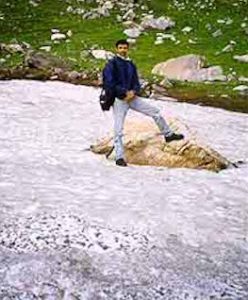
The Darjeeling hills were a part of Sikkim till the 18th century, when the Gurkha ambition to establish a trans-Himalayan empire rendered the original inhabitants, the lepchas, almost extinct. Later, the Darjeeling hills, were separated from Sikkim by the British.
Darjeeling, a hill station in the state of West Bengal, stands on a south eastern rim of the Singalila Ridge, south of the Raman river. The Ridge itself, is an imposing Himalayan divide between Sikkim (including the Darjeeling hills ) and Nepal. To the west of the Ridge are great views of the mighty peaks of Nepal including Everest, Lhotse, Nuptse, Makalu and the rest of their overwhelming fraternity. A little known fact is that one of the first probing sightings of Everest, done by the Survey of India, in their attempt to discover the highest peak in the world, were from Sandakphu and Phalut, located on the Singalila Ridge.
The Ridge ends in the North with the unbelievably awesome Kangchenjunga massif, which is also the third highest peak in the world. The Singalila Ridge trek offers spectacular views of this gigantic snow clad miracle.Kangchenjunga holds immense fascination for mountaineers, being as it is, a sort of benchmark in mountaineering challenge. Little wonder then, that for many years, the Survey of India thought Kangchenjunga was the highest peak in the world! Running to the north east of the massif are the magnificent 7,000 m plus peaks, the Kokthang, Rathong, Kabru, culminating in the beautiful and sacred peak of Pandim, which rises over the forested ridges of Sikkim.

The allure of mountain lovers for this region has many enigmatic reasons, with the Singalila Ridge being just one of them. Nowhere else in the world, do such steep heights crowd up a square kilometre. Essentially it results in the richest flora and fauna possible in the mountains. With over 600 varieties of orchids, trekking trails passing through variegated tree cover, literally bursting with rhododendrons, magnolias and primulas,under the umbrage of great peaks, cutting through blue skies.
Snow leopards and yaks at high altitudes and pandas in deep forests add to the inexorable charm of this region. A result of such topographic extremes is that the region is among the wettest in the Himalayas. Then there is of course the inexplicable aura of great mountaineering legends that surround the personalities of Tenzing Norgay, Nawang Gombu, Dorje Lhatoo and others, who chose to make this remote far eastern corner of the high Himalayas, their home.
magine trekking with a porter-guide, telling him what to do from time to time, only to discover on the third day of the Singalila Ridge trek, that his highest point was 8,300 m on his third expedition to Mt Everest ! That in twelve years, he stood on four summits above 7,000 m and three months hence, he is off to scale Kangchenjunga. In a quiet voice, with rapidly escaping authority, I asked him his full name. ‘Nima Thendu Sherpa’, came the reply. He quietly repeated the ‘Sherpa’. With head bowed in respect for the ever humbling Himalayas and her people, I plodded on over the Singalila Ridge. At Sandakphu, the sacred Kangchenjunga, looked down on us in deafeningly quiet confidence.
Much more trekking and hopefully some mountaineering. But one trail merits a repeat. On the Singalila Ridge to Sandakphu and Phalut.

Leave a Reply